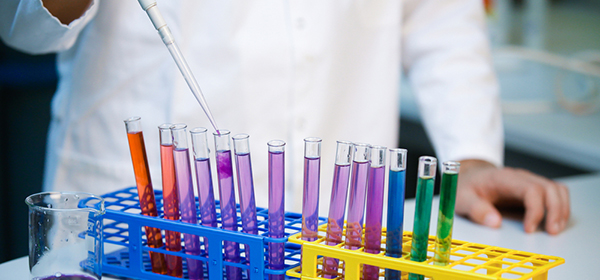Scientists have discovered new evidence that one root cause of Alzheimer’s disease may be a simple imbalance in pH chemistry in the brain.
Brain cells called astrocytes work to clear so-called amyloid beta proteins from the spaces between neurons. But if the clearing process goes awry, amyloid proteins pile up, leading to the characteristic amyloid plaques and nerve cell degeneration that are the hallmarks of Alzheimer’s
In a new study from John Hopkins Medicine, mice with an Alzheimer’s gene were given histone deacetylase (HDAC) inhibitors. The experiment successfully reversed the pH problem and improved the capacity for amyloid beta clearance.
The scientists say they are planning additional experiments to see if HDAC inhibitors have a similar effect in lab-grown astrocytes from Alzheimer’s patients.
However, the scientists caution that even before those experiments can happen, far more research is needed to verify and explain the precise relationship between amyloid proteins and Alzheimer’s disease, which affects an estimated 50 million people worldwide. To date, there is no cure and no drugs that can predictably or demonstrably prevent or reverse Alzheimer’s disease symptoms.
“By the time Alzheimer’s disease is diagnosed, most of the neurological damage is done, and it’s likely too late to reverse the disease’s progression,” says Professor of Physiology at the Johns Hopkins University, Rajini Rao.
“That’s why we need to focus on the earliest pathological symptoms or markers of Alzheimer’s disease, and we know that the biology and chemistry of endosomes is an important factor long before cognitive decline sets in.”
Nearly 20 years ago, scientists at Johns Hopkins and New York University discovered that endosomes, compartments that ferry molecules within cells, are larger and more abundant in the brains of people destined to develop Alzheimer’s disease. This hinted at an underlying problem that could lead to an accumulation of amyloid protein in spaces around neurons, says Prof. Rao.
To shuttle their cargo from place to place, endosomes use chaperones – proteins that bind to specific cargo and bring them back and forth from the cell’s surface.
Whether and how well this binding occurs depends on the proper pH level inside the endosome, a delicate balance of acidity and alkalinity, that makes endosomes float to the surface and slip back down into the cell.
Embedded in the endosome membrane are proteins that shuttle charged hydrogen atoms, known as protons, in and out of endosomes. The amount of protons inside the endosome determines its pH.
When fluids in the endosome become too acidic, the cargo is trapped within the endosome deep inside the cell. When the endosome contents are more alkaline, the cargo lingers at the cell’s surface for too long.
Do you think this discovery could lead to earlier detection of Alzheimer’s disease?
Related articles:
How to stop snoring
Are health labels reliable?
Herpes drug lowers Alzheimer’s risk

